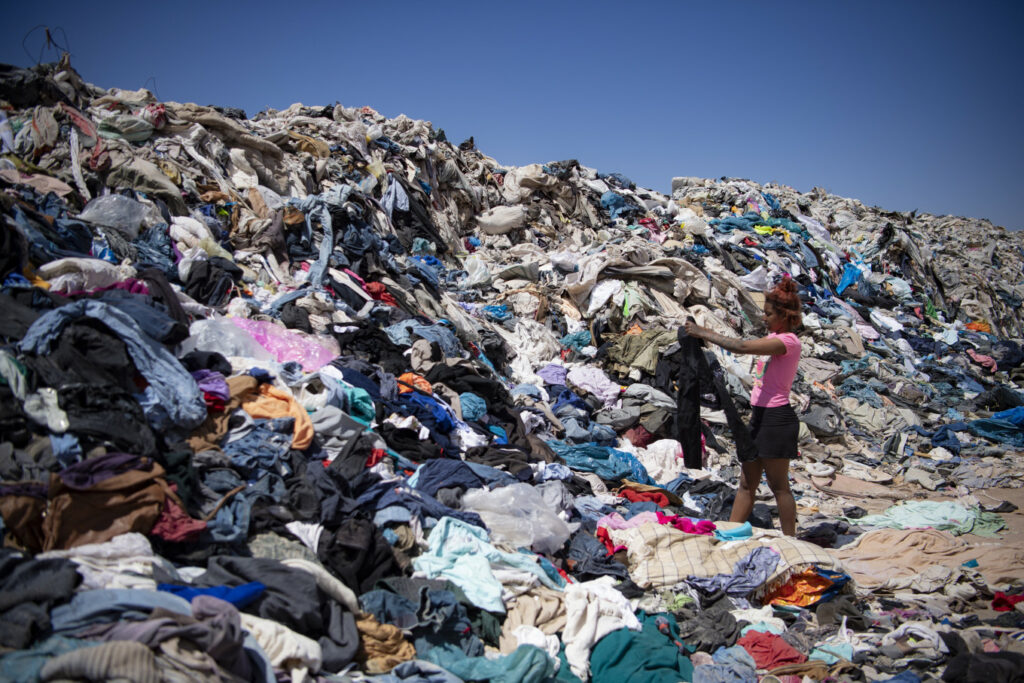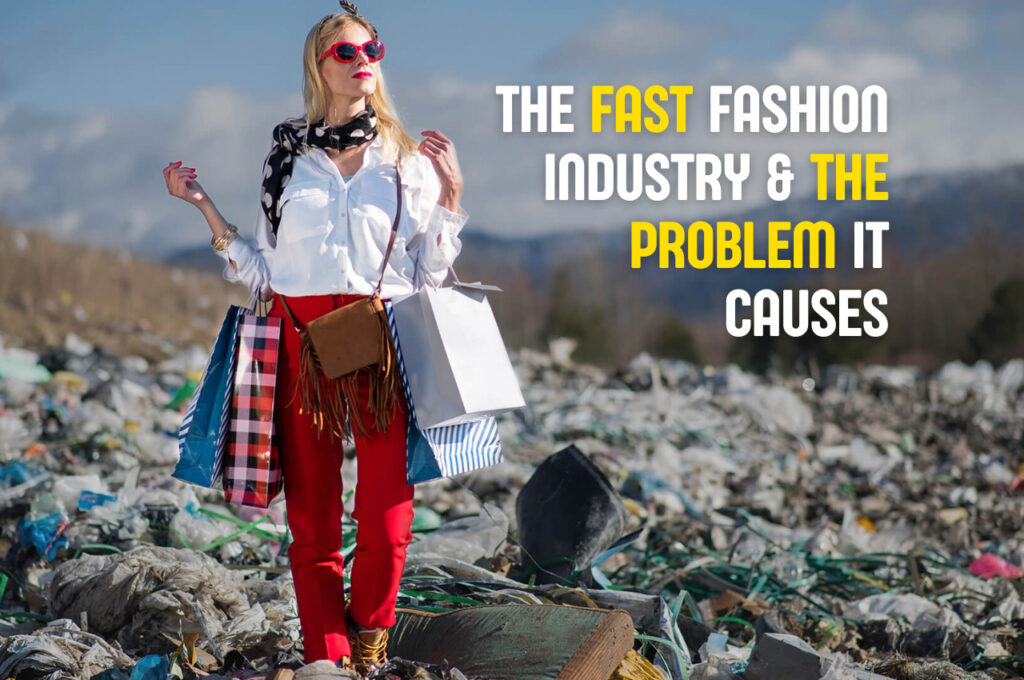Many people are unaware that the fashion industry is the world’s largest polluter, hidden behind the glamour of the industry. According to the Ellen MacArthur Foundation, the fashion industry emits more greenhouse gases than the shipping and aviation industries combined!
Since 2000, global fashion production has more than doubled, and average consumer clothing purchases have increased by 60% per year. Unlike 15 years ago, today’s consumers do not wear and store clothes for extended periods of time. It is common in developed countries to throw away used clothing, which ends up in landfills.
The increasing purchase of these clothes can not be separated from the birth of fast fashion, a modern term for cheap, and The growing popularity of these clothes cannot be separated from the emergence of fast fashion, a modern term for inexpensive and trendy clothing that borrows fashion ideas from famous fashion shows or celebrity styles.
The Impact Of The Fast Fashion Industry
1. Fast fashion Supports A Consumptive Lifestyle
Fast fashion is a business concept in the fashion industry that produces clothing in large quantities and quickly to meet market demand. Because fast fashion is less expensive than designer clothing, it encourages a consumerist lifestyle. Low prices while looking fashionable and cool? What person wouldn’t want that?
The fast-fashion business strategy is to produce a limited number of specific garments. Because of the limited supply, customers realize that if they don’t buy the clothes now, they may run out of stock. Using this psychological response is what allows fast fashion to have a high turnover and be well-liked by consumers.
Fast fashion focuses on how to produce goods at the lowest possible cost while still being able to respond to rapidly changing consumer demand; assuming that consumers want the latest fashionable clothing at reasonable prices.
Related Article: Polyester Material Manufacturing Process
2. Fast Fashion Industry Pollutes The Environment

According to Orsola de Castro, founder of Fashion Revolution, a fair and ethical fashion movement, fast fashion businesses are the largest contributors to waste due to a large amount of clothing produced.
Toxic chemicals are used to create vibrant colors, motifs, and textures that attract the fashion industry. After agriculture, textile dyeing is the world’s second-largest polluter of clean water. The use of low-cost easily produced petrochemical-based fabrics like polyester and synthetics is extremely harmful to the environment.
Polyester is the most commonly used fabric in the fashion industry, and when washed, it releases microfibers that contribute to the amount of plastic waste in the ocean. Because microfibers cannot decompose naturally, they endanger the life of aquatic organisms and pollute the food chain. Plankton feed on microfibers, which are then eaten by fish and shellfish, who are eaten by humans in the next food chain.
Fast fashion also emits carbon dioxide during the manufacturing process. The fashion industry’s owner has established factories in developing countries such as Vietnam, the Philippines, Pakistan, and Indonesia.
These countries lack raw materials and must import them from other countries such as China, the United States, and India. When production is finished, the garments will be shipped worldwide by ship and delivered to retailers by trucks and trains. Can you imagine how much carbon dioxide is emitted?
3. Fast Fashion Encourages A “Throwaway Culture”

Consumers don’t feel bad about throwing away their old clothes and buying new ones to keep up with fashion trends because of the low prices and fast-changing trends.
The United States generated 11 million tons of clothing waste in 2010. In Australia, each person purchases 27 kilograms of clothing per year, with 23 kilograms of that going to waste. Decomposing fabrics emit methane gas into the atmosphere, which contributes significantly to global warming.
4. Exploitation Worker
Remember that one of the principles of fast fashion is to reduce production costs while maintaining relatively low product prices. Fast fashion companies collaborate with garment factories in Asian countries with lower labor standards.
According to Business Insider, the average monthly wage for garment industry workers in Bangladesh is USD 87, or 1.2 million rupiahs. Housewives account for 20 to 60 percent of all unofficial workers. These housewives in Bangladesh also employ their children at home.
Slow Fashion, a term coined by Kate Fletcher, arose in response to the problems caused by fast fashion. Then, in 2017, an agenda was created that invites the world’s fashion brands to transform their system into a Circular Fashion System, which emphasizes the concept of recyclable materials in the design and production process.
Currently, 142 fashion brands around the world have signed on to the “2020 Circular Fashion System Commitment” program.
5. What We Can Do
- Buy less. Try to re-wear the clothes you already own. Instead of wearing new clothes, you can mix and match your old ones. You can also make new clothes out of old ones. You can, for example, cut your jeans into shorts or turn your jumper hoodie into a crop top jacket.
- Select High-Quality Clothes. If you must buy clothing, choose high-quality clothing made from environmentally friendly fabrics. Choose a clothing brand that promotes a green movement.
- Take Proper Care of Your Clothes. We should take proper care of the clothes we wear. Examine the care instructions on the clothing label. Wear it until it is worn out, repair it whenever possible, and then responsibly recycle it at the end of its life.
Source Reference:
- Rozak, A. (2022, June 17). Fast fashion industry and facts many people dont know. Abdul Rozak Blog. Retrieved July 2, 2022, from https://fashion-style.bearblog.dev/fast-fashion-industry-and-facts-many-people-dont-know/
- Tezar, Arbiyan. “Apa itu fast fashion? Apa dampak yang ditimbulkan?” Ozza Konveksi Jogja, 16 June 2022, ozzakonveksi.com/apa-itu-fast-fashion-apa-dampak-yang-ditimbulkan.


